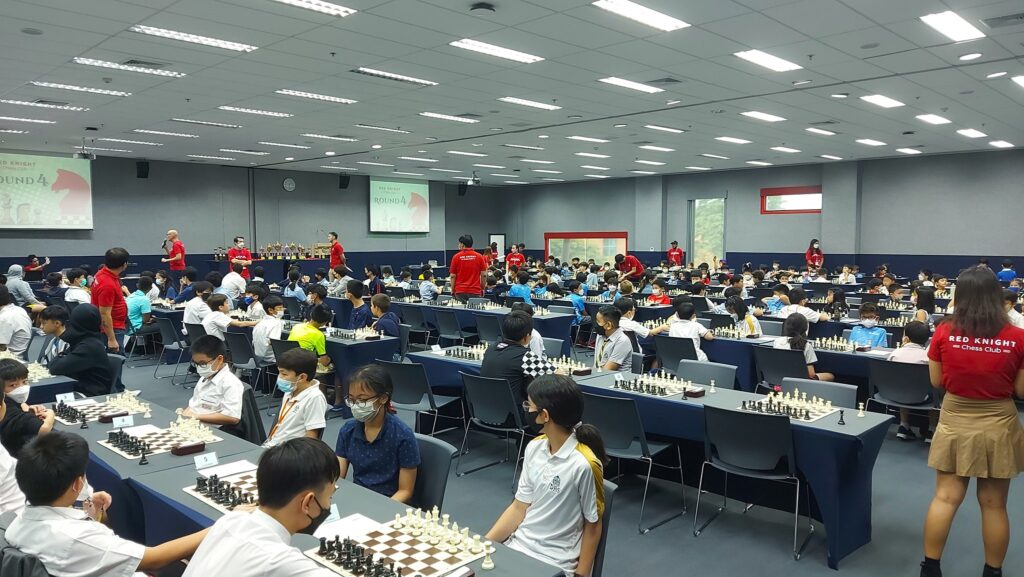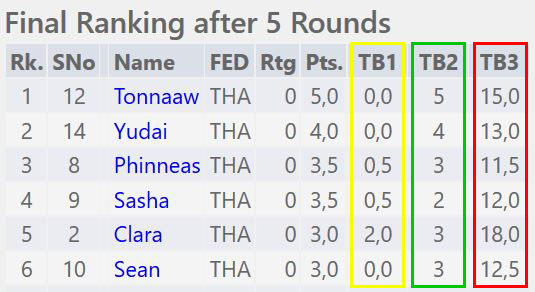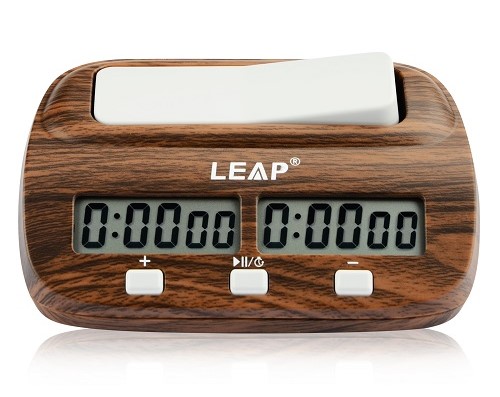- Red Knight Chess-
- November 16,2023
I am writing this article with intention to help chess parents and young chess players, especially those who are new in chess. If you are attending a big chess competition for a first time, it can be a little confusing. Hopefully, even more experienced parents and players will find this post useful.

The Swiss Pairing System
Firstly, I want to answer one question that always comes up before the tournament, which is: “If I lose the first game, do I stay or do I go home?”.
You always stay. The Swiss System is not an elimination system. If the tournament has 6 rounds, you stay for all the 6 rounds, regardless of your results. Most of the players will play all the 6 games. The exception are groups with odd number of players. In those cases, in each round one player will “get a bye”. This means that the player will not have an opponent in that round, but he will receive a point. After all, it is not the player’s fault for not having an opponent.
The Swiss System is pairing players based on their points. This means that a player who has 2 points after 2 rounds, will most likely be paired with another player who has 2 points. This is not always possible (again, odd number of players might change the pairings) but the system will make the best possible pairings.
We use the best pairing software in the world, called Swiss Manager. This is the same software that is used for the biggest and strongest competitions in the world. The software will output the pairings, results, standings and other statistics, on a world chess server known as chess-results. You will find QR codes with links to all the age-groups at the venue, and you will be able to follow everything round by round.
The Tie-breaks
In the end of the tournament, some players will have the same number of points. The bigger the group is, the more players will be in a tie. The Swiss Manager will use various tie-breaks to determine who deserves to be in the top of the group. If you are new in chess, you might find the tie-breaks very complicated. Unfortunately, this is how it is, there is no simple way to explain it to the kids. However, you can rely on the accuracy of the tie-break 100%. The system does not make mistakes when it comes to calculations.

To learn more about the most common tie-breaks in the world of chess, please read this article: Those Tie-Breaks Again.
Illegal moves
Illegal moves happen a lot in school tournaments. The less experienced and knowledgeable the player is, the more likely he/she will commit illegal moves. This basically means playing a move which goes against the rules of chess. You can learn more about illegal moves and how to react when your opponents play one, here: Illegal Moves.
Touch-move
If you touch a piece, you must move that piece. However, it is not all that simple, so here is an article with more details: The “Touch-move” Rule. For first-time tournament players, it is very important to know this.
Chess clock and the one-hand rule
It is a timer with two displays. Both players have equal amount of time in the beginning of the game. After playing the move, the player needs to press the button on top of his display. This will pause his time, and start counting the time of his opponent. A very important rule is to press the clock with the same hand that moved the piece. To say differently, the players are not allowed to move a piece with the right hand and press the clock with the left hand. Each move that is made, including castling (which involves moving two pieces, the King and the Rook) and pawn promotion (pushing the pawn to the back rank and exchanging it for a Queen or other piece) must be done with one hand only.

If the opponent forgot to press the clock after he/she played the move, it is a good sportsmanship to remind the opponent to press it. However, it is not an obligation. It is perfectly fine to play your move, or to wait until the opponent realizes that he forgot to press the button on his/hers side of the clock. If one of the opponents spends his time (the clock reaches 0:00) then he/she will lose the game, with exception of positions in which his/hers opponent does not have sufficient pieces to deliver a checkmate in any possible way. In that case the game will be drawn.
The clock has a pause button in the middle, which will pause the times on both displays. Players can pause the clock only if they need to call the arbiter. Players are not allowed to pick up the clocks or to turn them off.
The role of the arbiters
Each age group will have arbiters assigned to it. The arbiters will observe the game, resolve situations and make decisions. Players need to pause the clock and raise a hand when they need arbiter’s assistance. The arbiters will make their decision based on what they observed or the explanation given by the players. The arbiters are knowledgeable in chess so in many cases they can determine what happened by looking at the position on the chess board. They will collect the result when the game ends. The players should not set up the pieces until the arbiter arrives and sees the position on the board.
The arbiter’s decision is final.
Electronics
Mobile phones, smart watches and other devices for communication, or devices that make sounds, as a general rule are forbidden inside the playing area. If the player has a device and the device makes a sound, he may lose the game. Depending on the type of the tournament, the arbiters might allow less strict rules. The Chief Arbiter will inform the players about this rule before the start of the first round.
Sportsmanship
Talking to the opponent is not allowed during the game. If the opponent makes illegal move, a player should pause the clock and call the arbiter. If the opponent is talking or disrupting the game in other way, also call the arbiter. Players should play quietly and call the arbiters only if it is necessary. After the game, win draw or lose, it is good to say “good game” to the opponent. Players should keep quiet even after finishing their game, to avoid distracting the other players around them.
Other Frequently Asked Questions
Where can I find the pairings for the games?
– Each round, the arbiters will post the pairings on a designated wall in the waiting area. However, I would advise that you follow the pairings online and inform your children. This will reduce the crowd at the wall and speed up the process. QR codes with links to the pairings will be also posted on the walls and sent to you by email.
The pairings are up. How do I know if my child is playing with white or black pieces?
– If the name of your child is in the left column, he is playing with the white pieces. If he is in the right column, he is playing with the black pieces.
How will he find his seat?
– In the pairing list, the table number will be written. The tables inside the venue will have numbers on them. When the players in your age groups are called to go inside the playing area, follow your arbiters to the tables of your age group. Then find your table number. If you are not sure, ask the arbiters.
Are the parents allowed to watch the games?
– Unfortunately, no. The parents will wait in the waiting area. The parents of children in the U6, U7 and in some case U8 age groups will be allowed to help their children to find their seat before the game starts, but then they need to leave the playing area.
What happens when the game finishes?
– The players will call the arbiter, report the result, sign the scoresheet with the result, then set up their pieces and move to the waiting area to wait for the next round.
Can I leave the tournament early if my child doesn’t want to play anymore?
– Yes you can, but you need to inform the chief arbiter before the pairings for the next round is done. If your child finish his game and he wants to leave, quickly inform the arbiter. Then, the arbiter will exclude your child from the pairings for the remaining rounds. If the pairings are up, all players are expected to play. Otherwise their opponents will waste the whole round not having an opponent to play with. We would like to avoid these type of situations. Players who will leave the tournament without informing the arbiters on time, might not be accepted to play in future tournaments.
Thank you for reading this long article. I hope that you found useful information in it. I also hope that this article will not worry you. Our arbiters are very tolerant and understanding with the children, especially the youngest ones. We want everyone to enjoy their games and to learn from the experience.
Finally, here are some videos to help you master the checkmate techniques:
– The Bicycle Checkmate
– The Knight Shadow Checkmate
– The Box Checkmate
Enjoy your tournament!
